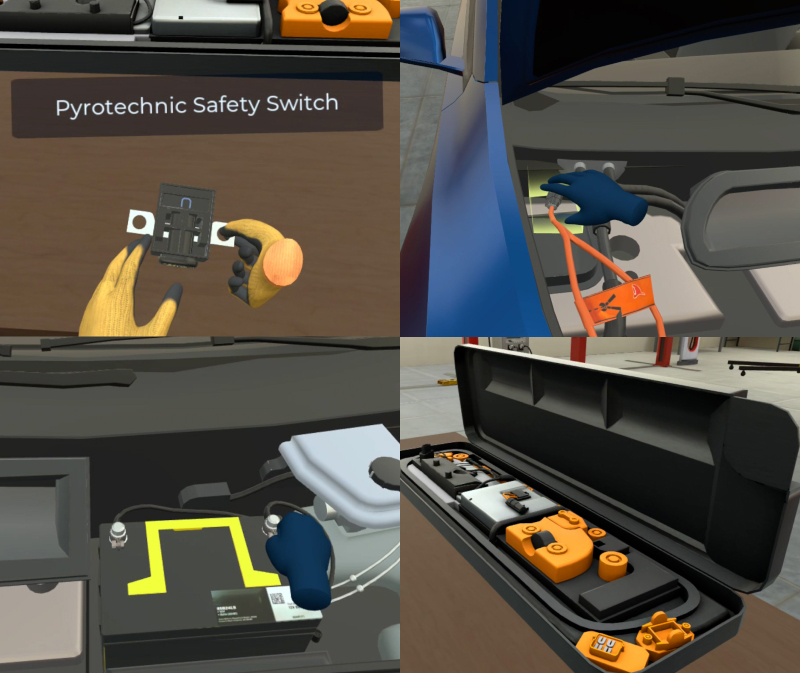
VR, 3D ILV, Interactive Modules

2 Hours

Technician

VR or Web-based

This Key Components of Hybrid Systems microcredential offers an in-depth, immersive overview of the critical components found in hybrid electric vehicles (HEVs). Through VR and interactive simulations, learners will explore the function, interaction, and maintenance considerations for systems such as electric motors, battery packs, inverters, and hybrid control modules. The course emphasizes system integration and the roles each component plays in optimizing performance and energy efficiency.


At ImmerseLearn, we train technicians to work confidently with advanced hybrid vehicle systems. This microcredential provides foundational knowledge of each major component in a hybrid drivetrain and how they interact during real-world operation.
Understand how electric motors and internal combustion engines share or alternate propulsion roles in series, parallel, or blended configurations.
Learn the structure and function of the battery pack, inverter, and DC-DC converter, including their role in energy conversion and storage.
Explore the power control unit and hybrid vehicle control module to understand how energy flow and component timing are managed across systems.
Examine the cooling systems responsible for maintaining safe operating temperatures for the battery, inverter, and motor systems.
Identify how the onboard charging system and DC-DC converter support both propulsion and 12V auxiliary loads during hybrid operation.
By the end of this training, learners will be able to recognize, describe, and trace the function of all major hybrid vehicle components using real-world service context and safety-conscious practices.

43000 W 9 mile, Suite 103, Novi MI, 48375
© ImmerseLearn